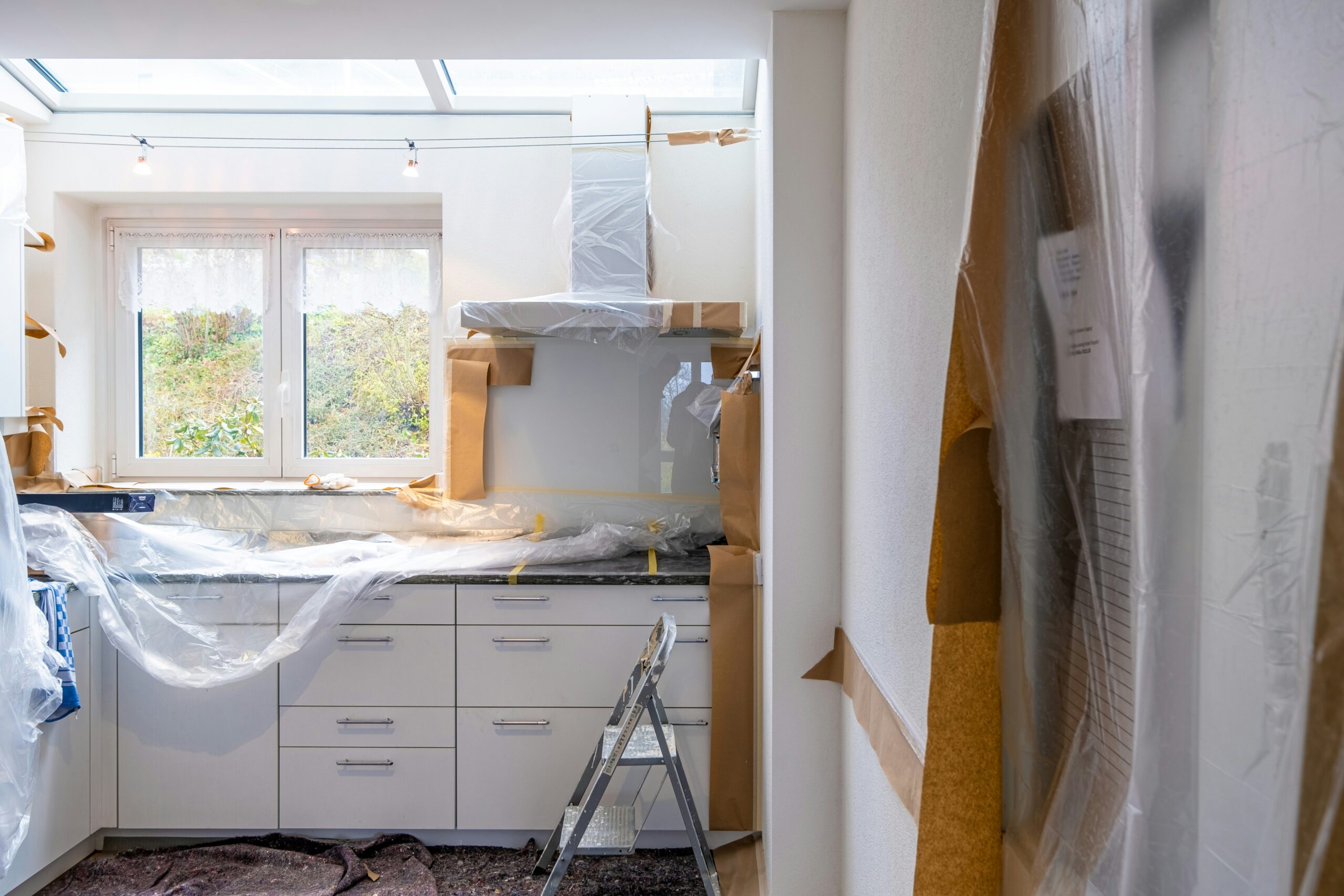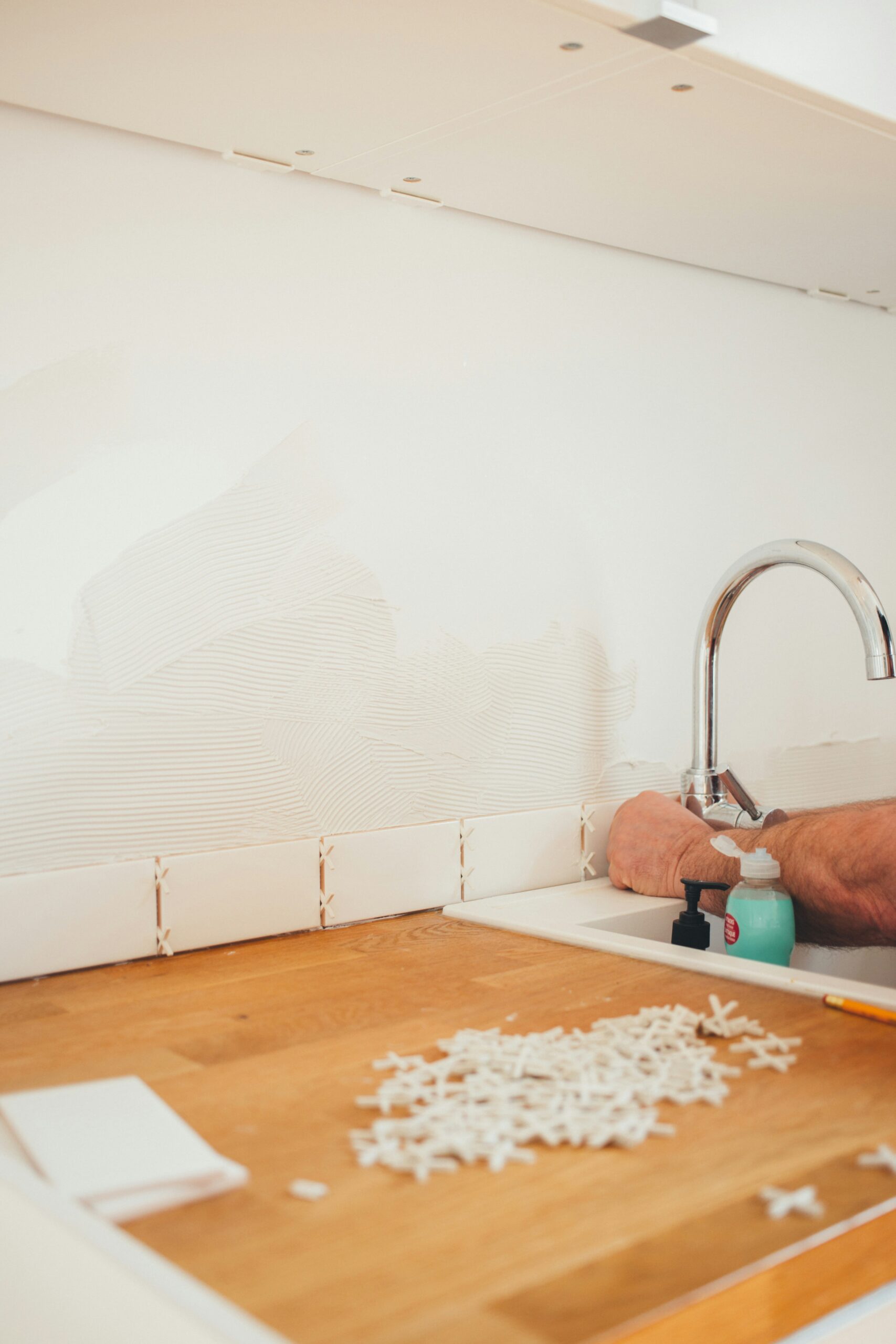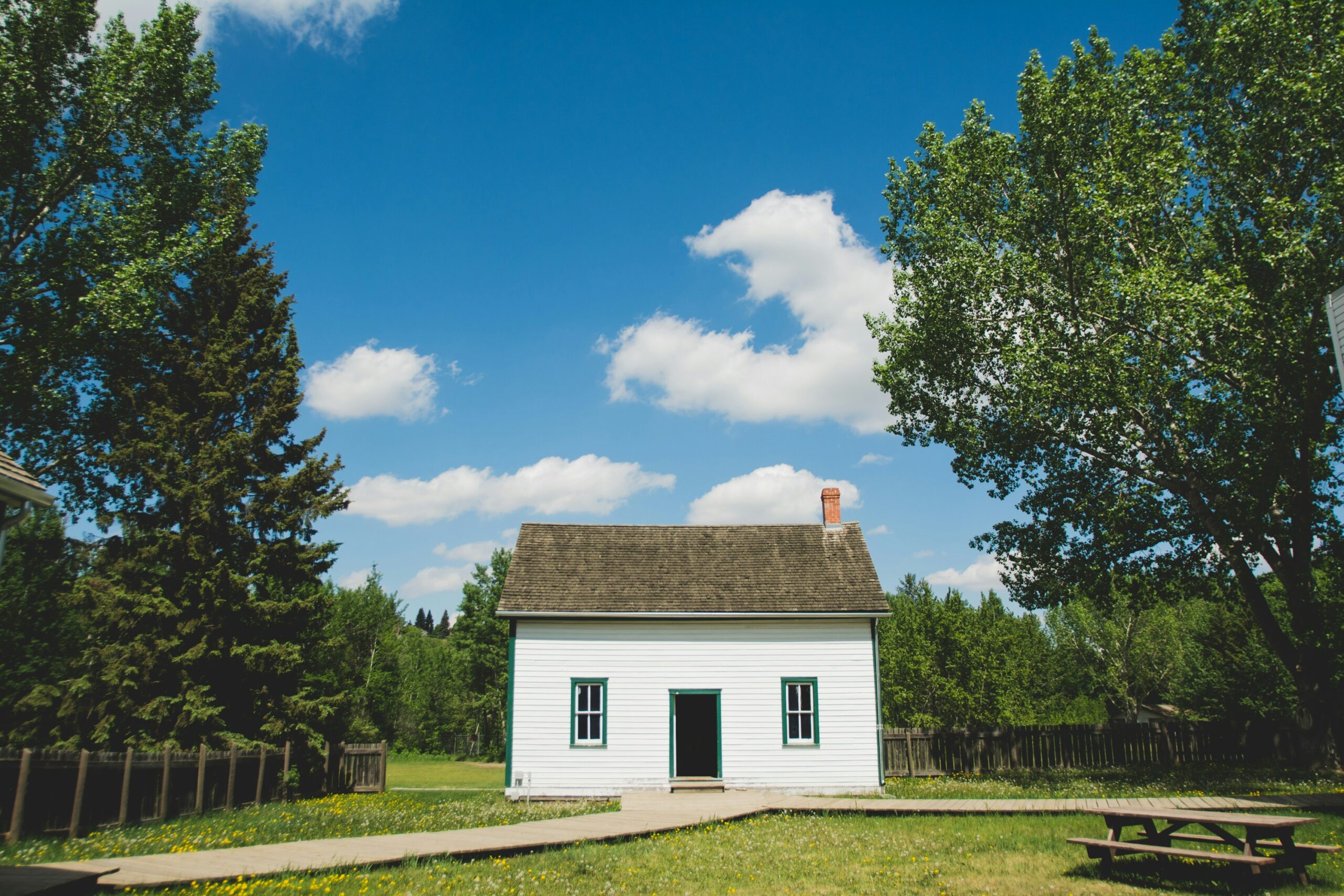Home Staging Tips from a Denver Contractor: Maximize Your Sale Price
July 9, 2025
Home Staging Tips from a Denver Contractor: Maximize Your Sale Price
July 9, 2025
When it comes to selling your Denver home, staging isn’t just about making it look pretty—it’s about strategically presenting your property to maximize its value and appeal to buyers. As both a General Contractor and Realtor, I see staging from a unique perspective that most agents can’t offer. I know which improvements actually add value and which ones are just expensive window dressing.
Over the years, I’ve helped countless Denver homeowners prepare their properties for sale, and I’ve learned that the most effective staging combines smart design choices with strategic improvements that buyers notice and value. Let me share the staging strategies that consistently help my clients sell faster and for higher prices.
Think Like a Buyer, Stage Like a Professional
The biggest mistake sellers make is staging for their own taste instead of staging for the market. Your goal isn’t to create your dream home—it’s to help potential buyers envision themselves living in the space. This means creating a neutral, welcoming environment that appeals to the broadest possible audience.
The Denver Buyer Mindset
Denver buyers are often relocating from other markets and comparing your home to everything they’ve seen. They’re looking for move-in ready properties that won’t require immediate work or investment. They want to see quality construction, good maintenance, and spaces that feel both functional and inviting.
Understanding this mindset shapes every staging decision. Buyers want to see that your home has been well-cared for and that they won’t inherit a list of problems or projects. This is where my contractor background becomes invaluable—I know which details buyers notice and which improvements make the biggest impact.
Start with the Bones: Structural Staging
Before you think about furniture placement or paint colors, address the fundamental issues that can kill a sale. As a contractor, I always start with what I call “structural staging”—making sure the basic systems and structure of your home present well.
Address Obvious Maintenance Issues
Nothing screams “money pit” to buyers like visible maintenance problems. Fix leaky faucets, replace burned-out light bulbs, repair squeaky hinges, and address any obvious wear and tear. These small fixes cost very little but have enormous impact on buyer perception.
Walk through your home and look for signs of deferred maintenance. Peeling caulk around tubs and showers, loose cabinet handles, scuffed baseboards, and worn weatherstripping all send signals that the home hasn’t been properly maintained. Buyers wonder what else might be wrong if these obvious issues haven’t been addressed.
Ensure Everything Functions Properly
Test every light switch, faucet, door, and window in your home. Buyers will notice if things don’t work properly, and non-functioning elements raise red flags about the overall condition of the property. This is especially important in Denver’s competitive market where buyers have choices.
Highlight Quality Construction
If your home has quality features like hardwood floors, solid wood doors, or custom millwork, make sure they’re showcased properly. Clean and polish hardwood floors, ensure doors open and close smoothly, and highlight architectural details that add character and value.
The Power of Paint: Your Biggest Bang for the Buck
Fresh paint is the single most cost-effective staging improvement you can make. It instantly makes spaces feel clean, updated, and well-maintained. But paint color choices can make or break your staging efforts.
Neutral Doesn’t Mean Boring
Forget builder-grade beige—today’s neutral palette includes warm grays, soft whites, and subtle earth tones that feel current and sophisticated. These colors provide a backdrop that allows buyers to envision their own belongings in the space while still feeling fresh and intentional.
In Denver’s market, where many buyers are coming from more expensive coastal markets, they expect to see homes that feel updated and stylish. The right paint colors signal that your home is current and well-maintained.
Strategic Color Placement
Use slightly different neutral tones to define spaces and create visual interest. A slightly deeper gray in the dining room can make it feel more intimate, while keeping connecting spaces in lighter tones maintains flow and openness.
Don’t Forget the Details
Fresh paint on trim, doors, and ceilings makes as much impact as wall color. Crisp white trim against neutral walls creates a clean, finished look that buyers associate with quality and attention to detail.
Lighting: Creating the Right Atmosphere
Good lighting can transform how buyers feel in your space, and poor lighting can kill a sale even if everything else is perfect. Denver’s abundant sunshine is a selling point, but you need to complement natural light with strategic artificial lighting.
Maximize Natural Light
Clean windows inside and out, remove heavy window treatments, and trim any landscaping that blocks light from entering your home. Natural light makes spaces feel larger, more welcoming, and more valuable.
Layer Your Lighting
Each room should have multiple light sources at different levels. Overhead lighting provides general illumination, table and floor lamps create warmth and ambiance, and accent lighting highlights architectural features or artwork.
Update Outdated Fixtures
Nothing dates a home like outdated light fixtures. You don’t need to spend thousands on designer fixtures, but replacing obvious 1980s or 1990s fixtures with current styles makes a significant impact on how buyers perceive your home’s condition and style.
Furniture and Flow: Creating Functional Spaces
The goal of furniture staging isn’t to fill every space—it’s to help buyers understand how to use each area effectively. This is especially important in Denver homes from the 1960s through 1990s, which often have unique layouts that buyers might not immediately understand.
Define Each Space’s Purpose
Every room should have a clear function that’s immediately obvious to buyers. If you have a formal dining room that you’ve been using as an office, stage it as a dining room. Buyers need to see how the space was designed to be used.
Create Conversation Areas
Arrange furniture to create intimate conversation areas rather than pushing everything against the walls. This makes rooms feel more inviting and helps buyers envision entertaining and daily life in the space.
Show Storage Solutions
Denver buyers value storage, so showcase your home’s storage capabilities. Organize closets to show maximum capacity, highlight built-in storage features, and demonstrate how spaces can serve multiple functions.
Kitchen and Bathroom Staging: Where Sales Are Made
Kitchens and bathrooms sell homes, and they also kill sales if they’re not presented properly. These rooms require special attention because buyers scrutinize them more carefully than any other spaces.
Kitchen Staging Strategies
Clear countertops completely except for a few carefully chosen accessories. Buyers want to see counter space and envision their own appliances and belongings in the kitchen. Clean and organize inside cabinets and drawers because buyers will look, and organized storage suggests the kitchen is functional and well-designed.
If your kitchen needs updates, focus on cost-effective improvements that make the biggest visual impact. New cabinet hardware, a fresh backsplash, or updated lighting can modernize a kitchen without major renovation costs.
Bathroom Presentation
Bathrooms should feel like spa retreats, not utilitarian spaces. Add fresh towels, remove personal items completely, and ensure everything is spotlessly clean. Replace worn shower curtains, re-caulk around tubs and showers if needed, and make sure all fixtures shine.
Outdoor Spaces: Extending Your Home’s Appeal
Denver buyers value outdoor living spaces, and your home’s exterior and outdoor areas are the first things potential buyers see. These spaces need to make a strong first impression and demonstrate the lifestyle your home offers.
Curb Appeal Fundamentals
Your home’s exterior is the first thing buyers see, and first impressions are lasting. Ensure your lawn is well-maintained, plant beds are weeded and mulched, and walkways are clean and inviting. Power wash siding, driveways, and patios to remove winter grime and make everything look fresh.
Showcase Outdoor Living
If you have a deck, patio, or other outdoor living space, stage it to show its potential. Clean outdoor furniture, add some colorful plants or flowers, and create an inviting atmosphere that helps buyers envision outdoor entertaining and relaxation.
Highlight Denver’s Lifestyle
Denver buyers often choose our area for the outdoor lifestyle, so make sure your outdoor spaces reflect that appeal. Even small touches like a clean grill, attractive outdoor lighting, or well-maintained landscaping can reinforce the lifestyle benefits of your location.
The Contractor’s Eye: Details That Matter
My construction background helps me notice details that other staging professionals might miss, but that buyers definitely notice. These technical details can make or break a buyer’s impression of your home’s quality and condition.
Mechanical Systems Presentation
If your furnace, water heater, or electrical panel is visible, make sure these areas are clean and organized. Buyers often check these systems, and a well-maintained mechanical room suggests the home’s systems are in good condition.
Quality Indicators
Highlight features that indicate quality construction: solid wood doors, quality hardware, good insulation, efficient windows, and well-designed storage. These details help justify your asking price and differentiate your home from others on the market.
Safety and Code Compliance
Ensure all safety features are visible and functional: smoke detectors, GFCI outlets in appropriate locations, handrails on stairs, and proper ventilation in bathrooms. Buyers notice these details, and their presence suggests the home is well-maintained and safe.
Timing Your Staging Investment
Not every staging improvement makes financial sense for every situation. The key is understanding which improvements will provide the best return on investment for your specific property and market conditions.
High-Impact, Low-Cost Improvements
Focus first on improvements that cost little but make big visual impact: paint, deep cleaning, decluttering, and minor repairs. These improvements almost always pay for themselves in faster sales and higher prices.
Strategic Upgrades
Consider more significant improvements only if they’ll clearly increase your home’s value or help it compete more effectively. A kitchen backsplash might be worth the investment if it helps your home show better than similar properties, but a full kitchen renovation rarely pays for itself in staging situations.
Market-Specific Considerations
Denver’s competitive market means buyers have choices, so your home needs to stand out. However, over-improving for staging can eat into your profits. Focus on improvements that help your home compete effectively without over-investing.
The Bottom Line: Strategic Staging Sells Homes
Effective staging isn’t about creating a magazine-perfect home—it’s about strategically presenting your property to maximize its appeal and value to potential buyers. The combination of contractor knowledge and real estate expertise helps me guide sellers toward staging decisions that actually impact their bottom line.
Remember that staging is marketing, not decorating. Every decision should be made with potential buyers in mind, not your personal preferences. The goal is to help buyers envision themselves living in your home while demonstrating that it’s been well-maintained and cared for.
Ready to Stage Your Home for Success?
Whether you’re planning to list soon or preparing for a future sale, strategic staging can significantly impact your results. As both a General Contractor and Realtor, I can help you identify which improvements will provide the best return and create a staging plan that maximizes your home’s appeal to Denver buyers.
Schedule Your Pre-Listing Consultation:
- Professional assessment of your home’s staging needs
- Prioritized improvement recommendations with cost estimates
- Market analysis to determine optimal pricing strategy
- Timeline planning for staging and listing preparation
Kitchen renovations consistently rank as one of the most popular and valuable home improvement projects, and for good reason. A well-executed kitchen remodel can transform your daily living experience while [...]
Fixer-uppers can be fantastic opportunities to build equity and create your dream home at a lower entry price. As both a General Contractor and Realtor in Denver, I've helped countless [...]
Timing can make a significant difference in how quickly your Denver home sells and the price you receive. As both a Realtor and General Contractor who's helped countless homeowners navigate [...]
When it comes to selling your Denver home, staging isn’t just about making it look pretty—it’s about strategically presenting your property to maximize its value and appeal to buyers. As both a General Contractor and Realtor, I see staging from a unique perspective that most agents can’t offer. I know which improvements actually add value and which ones are just expensive window dressing.
Over the years, I’ve helped countless Denver homeowners prepare their properties for sale, and I’ve learned that the most effective staging combines smart design choices with strategic improvements that buyers notice and value. Let me share the staging strategies that consistently help my clients sell faster and for higher prices.
Think Like a Buyer, Stage Like a Professional
The biggest mistake sellers make is staging for their own taste instead of staging for the market. Your goal isn’t to create your dream home—it’s to help potential buyers envision themselves living in the space. This means creating a neutral, welcoming environment that appeals to the broadest possible audience.
The Denver Buyer Mindset
Denver buyers are often relocating from other markets and comparing your home to everything they’ve seen. They’re looking for move-in ready properties that won’t require immediate work or investment. They want to see quality construction, good maintenance, and spaces that feel both functional and inviting.
Understanding this mindset shapes every staging decision. Buyers want to see that your home has been well-cared for and that they won’t inherit a list of problems or projects. This is where my contractor background becomes invaluable—I know which details buyers notice and which improvements make the biggest impact.
Start with the Bones: Structural Staging
Before you think about furniture placement or paint colors, address the fundamental issues that can kill a sale. As a contractor, I always start with what I call “structural staging”—making sure the basic systems and structure of your home present well.
Address Obvious Maintenance Issues
Nothing screams “money pit” to buyers like visible maintenance problems. Fix leaky faucets, replace burned-out light bulbs, repair squeaky hinges, and address any obvious wear and tear. These small fixes cost very little but have enormous impact on buyer perception.
Walk through your home and look for signs of deferred maintenance. Peeling caulk around tubs and showers, loose cabinet handles, scuffed baseboards, and worn weatherstripping all send signals that the home hasn’t been properly maintained. Buyers wonder what else might be wrong if these obvious issues haven’t been addressed.
Ensure Everything Functions Properly
Test every light switch, faucet, door, and window in your home. Buyers will notice if things don’t work properly, and non-functioning elements raise red flags about the overall condition of the property. This is especially important in Denver’s competitive market where buyers have choices.
Highlight Quality Construction
If your home has quality features like hardwood floors, solid wood doors, or custom millwork, make sure they’re showcased properly. Clean and polish hardwood floors, ensure doors open and close smoothly, and highlight architectural details that add character and value.
The Power of Paint: Your Biggest Bang for the Buck
Fresh paint is the single most cost-effective staging improvement you can make. It instantly makes spaces feel clean, updated, and well-maintained. But paint color choices can make or break your staging efforts.
Neutral Doesn’t Mean Boring
Forget builder-grade beige—today’s neutral palette includes warm grays, soft whites, and subtle earth tones that feel current and sophisticated. These colors provide a backdrop that allows buyers to envision their own belongings in the space while still feeling fresh and intentional.
In Denver’s market, where many buyers are coming from more expensive coastal markets, they expect to see homes that feel updated and stylish. The right paint colors signal that your home is current and well-maintained.
Strategic Color Placement
Use slightly different neutral tones to define spaces and create visual interest. A slightly deeper gray in the dining room can make it feel more intimate, while keeping connecting spaces in lighter tones maintains flow and openness.
Don’t Forget the Details
Fresh paint on trim, doors, and ceilings makes as much impact as wall color. Crisp white trim against neutral walls creates a clean, finished look that buyers associate with quality and attention to detail.
Lighting: Creating the Right Atmosphere
Good lighting can transform how buyers feel in your space, and poor lighting can kill a sale even if everything else is perfect. Denver’s abundant sunshine is a selling point, but you need to complement natural light with strategic artificial lighting.
Maximize Natural Light
Clean windows inside and out, remove heavy window treatments, and trim any landscaping that blocks light from entering your home. Natural light makes spaces feel larger, more welcoming, and more valuable.
Layer Your Lighting
Each room should have multiple light sources at different levels. Overhead lighting provides general illumination, table and floor lamps create warmth and ambiance, and accent lighting highlights architectural features or artwork.
Update Outdated Fixtures
Nothing dates a home like outdated light fixtures. You don’t need to spend thousands on designer fixtures, but replacing obvious 1980s or 1990s fixtures with current styles makes a significant impact on how buyers perceive your home’s condition and style.
Furniture and Flow: Creating Functional Spaces
The goal of furniture staging isn’t to fill every space—it’s to help buyers understand how to use each area effectively. This is especially important in Denver homes from the 1960s through 1990s, which often have unique layouts that buyers might not immediately understand.
Define Each Space’s Purpose
Every room should have a clear function that’s immediately obvious to buyers. If you have a formal dining room that you’ve been using as an office, stage it as a dining room. Buyers need to see how the space was designed to be used.
Create Conversation Areas
Arrange furniture to create intimate conversation areas rather than pushing everything against the walls. This makes rooms feel more inviting and helps buyers envision entertaining and daily life in the space.
Show Storage Solutions
Denver buyers value storage, so showcase your home’s storage capabilities. Organize closets to show maximum capacity, highlight built-in storage features, and demonstrate how spaces can serve multiple functions.
Kitchen and Bathroom Staging: Where Sales Are Made
Kitchens and bathrooms sell homes, and they also kill sales if they’re not presented properly. These rooms require special attention because buyers scrutinize them more carefully than any other spaces.
Kitchen Staging Strategies
Clear countertops completely except for a few carefully chosen accessories. Buyers want to see counter space and envision their own appliances and belongings in the kitchen. Clean and organize inside cabinets and drawers because buyers will look, and organized storage suggests the kitchen is functional and well-designed.
If your kitchen needs updates, focus on cost-effective improvements that make the biggest visual impact. New cabinet hardware, a fresh backsplash, or updated lighting can modernize a kitchen without major renovation costs.
Bathroom Presentation
Bathrooms should feel like spa retreats, not utilitarian spaces. Add fresh towels, remove personal items completely, and ensure everything is spotlessly clean. Replace worn shower curtains, re-caulk around tubs and showers if needed, and make sure all fixtures shine.
Outdoor Spaces: Extending Your Home’s Appeal
Denver buyers value outdoor living spaces, and your home’s exterior and outdoor areas are the first things potential buyers see. These spaces need to make a strong first impression and demonstrate the lifestyle your home offers.
Curb Appeal Fundamentals
Your home’s exterior is the first thing buyers see, and first impressions are lasting. Ensure your lawn is well-maintained, plant beds are weeded and mulched, and walkways are clean and inviting. Power wash siding, driveways, and patios to remove winter grime and make everything look fresh.
Showcase Outdoor Living
If you have a deck, patio, or other outdoor living space, stage it to show its potential. Clean outdoor furniture, add some colorful plants or flowers, and create an inviting atmosphere that helps buyers envision outdoor entertaining and relaxation.
Highlight Denver’s Lifestyle
Denver buyers often choose our area for the outdoor lifestyle, so make sure your outdoor spaces reflect that appeal. Even small touches like a clean grill, attractive outdoor lighting, or well-maintained landscaping can reinforce the lifestyle benefits of your location.
The Contractor’s Eye: Details That Matter
My construction background helps me notice details that other staging professionals might miss, but that buyers definitely notice. These technical details can make or break a buyer’s impression of your home’s quality and condition.
Mechanical Systems Presentation
If your furnace, water heater, or electrical panel is visible, make sure these areas are clean and organized. Buyers often check these systems, and a well-maintained mechanical room suggests the home’s systems are in good condition.
Quality Indicators
Highlight features that indicate quality construction: solid wood doors, quality hardware, good insulation, efficient windows, and well-designed storage. These details help justify your asking price and differentiate your home from others on the market.
Safety and Code Compliance
Ensure all safety features are visible and functional: smoke detectors, GFCI outlets in appropriate locations, handrails on stairs, and proper ventilation in bathrooms. Buyers notice these details, and their presence suggests the home is well-maintained and safe.
Timing Your Staging Investment
Not every staging improvement makes financial sense for every situation. The key is understanding which improvements will provide the best return on investment for your specific property and market conditions.
High-Impact, Low-Cost Improvements
Focus first on improvements that cost little but make big visual impact: paint, deep cleaning, decluttering, and minor repairs. These improvements almost always pay for themselves in faster sales and higher prices.
Strategic Upgrades
Consider more significant improvements only if they’ll clearly increase your home’s value or help it compete more effectively. A kitchen backsplash might be worth the investment if it helps your home show better than similar properties, but a full kitchen renovation rarely pays for itself in staging situations.
Market-Specific Considerations
Denver’s competitive market means buyers have choices, so your home needs to stand out. However, over-improving for staging can eat into your profits. Focus on improvements that help your home compete effectively without over-investing.
The Bottom Line: Strategic Staging Sells Homes
Effective staging isn’t about creating a magazine-perfect home—it’s about strategically presenting your property to maximize its appeal and value to potential buyers. The combination of contractor knowledge and real estate expertise helps me guide sellers toward staging decisions that actually impact their bottom line.
Remember that staging is marketing, not decorating. Every decision should be made with potential buyers in mind, not your personal preferences. The goal is to help buyers envision themselves living in your home while demonstrating that it’s been well-maintained and cared for.
Ready to Stage Your Home for Success?
Whether you’re planning to list soon or preparing for a future sale, strategic staging can significantly impact your results. As both a General Contractor and Realtor, I can help you identify which improvements will provide the best return and create a staging plan that maximizes your home’s appeal to Denver buyers.
Schedule Your Pre-Listing Consultation:
- Professional assessment of your home’s staging needs
- Prioritized improvement recommendations with cost estimates
- Market analysis to determine optimal pricing strategy
- Timeline planning for staging and listing preparation
Buying your first home in Denver is an exciting milestone, but it can also be overwhelming in our competitive market. As both a Realtor and General Contractor who's helped countless [...]
Kitchen renovations consistently rank as one of the most popular and valuable home improvement projects, and for good reason. A well-executed kitchen remodel can transform your daily living experience while [...]
Fixer-uppers can be fantastic opportunities to build equity and create your dream home at a lower entry price. As both a General Contractor and Realtor in Denver, I've helped countless [...]






